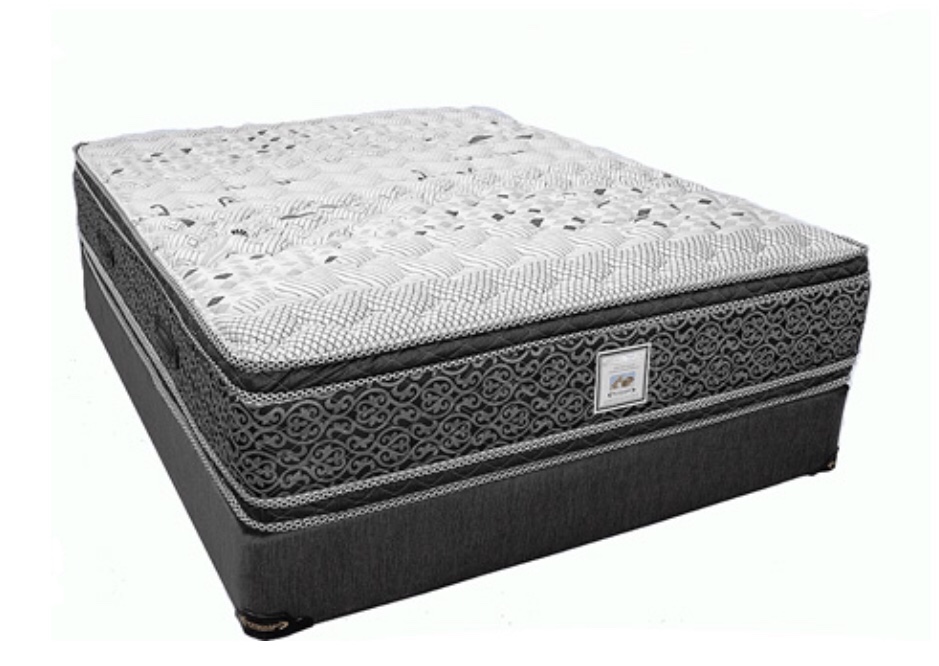
Blog Questions about beds and mattresses answered. And some stories told.

If you’ve ever wondered why your newer mattress doesn’t seem to last as long as the one you grew up with, you’re not alone. Many people have noticed that modern mattresses wear out more quickly, often sagging or losing comfort in just a few years. One of the biggest changes in mattress construction over the past two decades is the shift from two-sided mattresses to one-sided designs. But did this change shorten mattress lifespan?
In short: Yes, one-sided mattresses (unless they have a significant latex layer) generally do not last as long as traditional two-sided (flippable) mattresses. But why is that? Let’s take a deeper look into the differences between one-sided and two-sided mattresses, how long each typically lasts, and what you can do to make your mattress last longer.
What Is a One-Sided Mattress?
A one-sided mattress is a mattress that is designed to be slept on only one side. The other side (the bottom) usually has a firmer, less comfortable surface and is not meant for sleeping. These mattresses are not flippable, and the comfort layers are only on one side.
This is a major contrast to two-sided mattresses, which were once the industry standard. Two-sided mattresses had comfort layers on both sides and were designed to be flipped regularly, distributing wear evenly across the entire structure.
Why Did Mattress Companies Switch to One-Sided Designs?
The shift to one-sided mattresses began in the early 2000s. There were a few reasons for the change:
- Cost Savings: Manufacturing one-sided mattresses uses less material, which reduces production costs. Fewer materials = more profit.
- Convenience Marketing: Brands began promoting one-sided mattresses as “no-flip” designs, marketing them as low-maintenance solutions.
- Product Turnover: Shorter-lasting mattresses mean customers replace them more often, which is profitable for manufacturers and retailers.
While some high-end mattress makers still offer two-sided options, the vast majority of mattresses sold today are one-sided.
Do One-Sided Mattresses Wear Out Faster?
Yes, one-sided mattresses typically wear out faster than two-sided mattresses. This is mainly due to uneven wear and the inability to flip the mattress, which leads to the top comfort layer breaking down more quickly.
Here’s why one-sided mattresses don’t last as long:
- Constant Pressure on One Surface
Since you’re always sleeping on the same side, the materials compress and degrade faster (particularly true of memory foam) than if you were able to flip the mattress periodically. - Loss of Resilience
Over time, foam, latex, or pillow-top materials will lose their bounce and support. Flipping a two-sided mattress allows these layers time to recover; one-sided models don’t get that chance. - Sagging and Body Impressions
With consistent use on one side, body impressions form more quickly, especially in foam or pillow-top models. Once these indentations form, comfort and support suffer. - Less Overall Material
Many one-sided mattresses simply have fewer durable materials than older, flippable models. That can contribute to a shorter life.
Tips to Extend the Life of Your Mattress (One-Sided or Two-Sided)
Even if you own a one-sided mattress, there are things you can do to prolong its comfort and support:
- Rotate Regularly
Even though you can’t flip a one-sided mattress, you can (and should) rotate it 180 degrees every 3–6 months. This distributes wear across the surface. - Use a Mattress Protector
Protect against spills, dust mites, and body oils. A quality protector can prevent the breakdown of comfort layers caused by moisture and debris. - Support It Properly
Make sure your mattress is on a solid foundation. Box springs, slats, or platform beds should provide full, even support with extra support down the centre (to the floor) if you sleep on a queen or a kings size bed.
Should You Go Back to a Two-Sided Mattress?
If durability and long-term value are important to you, a two-sided mattress may be a smart move—especially if you’re tired of seeing your mattress sag after just a few years. Although they’re harder to find and may require a bit more effort to flip regularly, the payoff is potentially years of extra life from your mattress.

Final Thoughts: One-Sided vs Two-Sided Mattresses
The switch from flippable to one-sided mattresses was driven by a combination of cost savings for manufacturers and convenience for consumers. But that convenience comes at a price: shorter lifespan and often more frequent mattress replacement.
If you’re shopping for a mattress and want the best long-term value, consider exploring two-sided mattress options or invest in a high-quality one-sided mattress made with premium materials. And remember—regular rotation, a good protector, and proper support can all help extend the life of any mattress.



 Copyright © 2025 |
Copyright © 2025 |